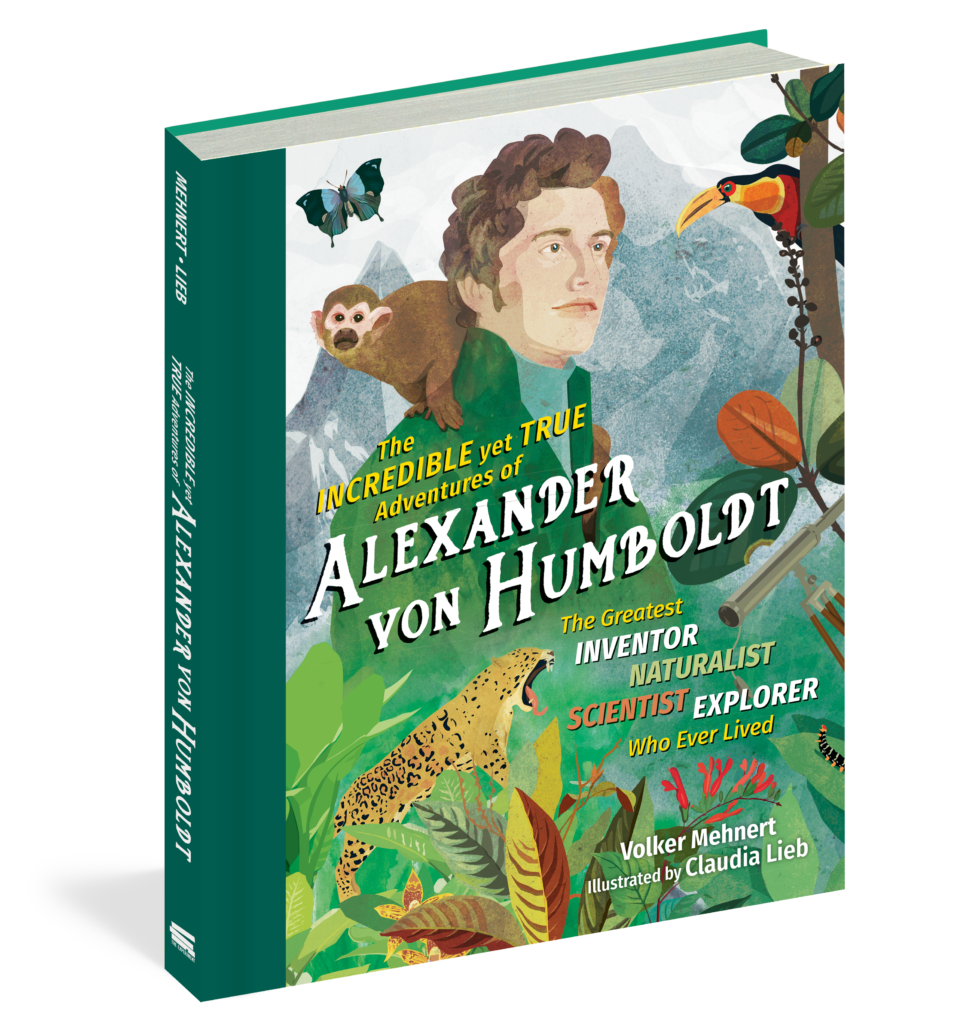Explorer. Naturalist. All-around genius. Lost hero of science. Alexander von Humboldt was a predecessor of—and inspiration for—major historical figures ranging from Charles Darwin to Lewis and Clark, and his scientific accomplishments were numerous. Still, his story and contributions are often overshadowed or left out of history books entirely.
The Incredible yet True Adventures of Alexander von Humboldt, a beautifully illustrated, well-researched journey for middle-grade readers, works to change this by shedding light on the explorer’s remarkable adventures and discoveries. But did you know that it’s possible to find evidence of Humboldt’s legacy all around us?
To honor Humboldt’s 250th birthday this month, we’re highlighting some of his most important namesakes. See below to learn about some of the incredible places, objects, and creatures named after Alexander von Humboldt!
Humboldt Namesakes
487 Humboldt – an asteroid discovered in 1977.
Humboldt Peak – a mountain peak in Colorado’s Sangre de Christo Range. It is one of the ninety-six peaks in the United States with an elevation of at least 14,000 ft.
Sima Huboldt – the name of a massive sinkhole located in Venezuela. It is notable for its massive width (over 300 meters!) and depth.
Humboldt Squid – also known as the jumbo squid, the Humboldt squid is a predatory squid in the Pacific Ocean. It is known for displaying aggressive behavior towards humans, and for flashing red and white whilst hunting.
Humboldt State University – a public university in Arcata, California. Notable alumni include writer Raymond Carver and the creator of SpongeBob SquarePants, Stephen Hillenburg.
Mammillaria humboldtii – a cactus species originally from Mexico. It is small and cylindrical, and covered in tight, white bristles. In the spring it blooms with bright pink flowers.
Humboldt glacier – the widest glacier in the Northern Hemisphere. It is located in Greenland, and measures at 68 miles wide.
Humboldt crater – a large crater located on the eastern limb of the Moon. Its diameter measures 128 miles.
Humboldt’s Woolly Monkey – a monkey species that originates from rainforests in South America. They are a highly endangered species, but they continue to be hunted by humans for the illegal pet trade.
Humboldt Cave – an archaeological site in Nevada that provides one of the earliest documented human habitations in North America.
Humboldt Redwoods State Park – a state park located in California. It contains the world’s largest remaining contiguous old-growth forest of coast redwoods, which can grow to be over 300 feet tall!
Humboldt penguin – a penguin species that breeds in Chile and Peru. In 2009, a zoo in Germany reported that a pair of two male Humboldt Penguins adopted an egg that had been abandoned by its biological parents. After the egg hatched, the two penguins raised, cared for, and fed the chick in the same manner that heterosexual penguin couples raise their own offspring.
Humboldt Sink – a dry lake bed in Nevada. During the westward migrations of the mid-1800s, it was known as the ’Forty Mile Desert’ because of how long and treacherous the trek across it was.
Humboldt City – a former settlement in Nevada. It peaked in the mid-1800s but was later on completely abandoned due to economic depression. It currently consists of abandoned buildings and ruins and is known as a ’ghost town’.
Humboldt’s Lily – a species of lily native to California and Mexico. It is bright orange and can grow to be up to 6 ft. tall.

To learn more about Alexander von Humboldt’s namesakes, be sure to check out this print out from the book. And, for educators, be sure to download our exclusive educator’s guide! The Incredible yet True Adventures of Alexander von Humboldt is available now, wherever books are sold.



